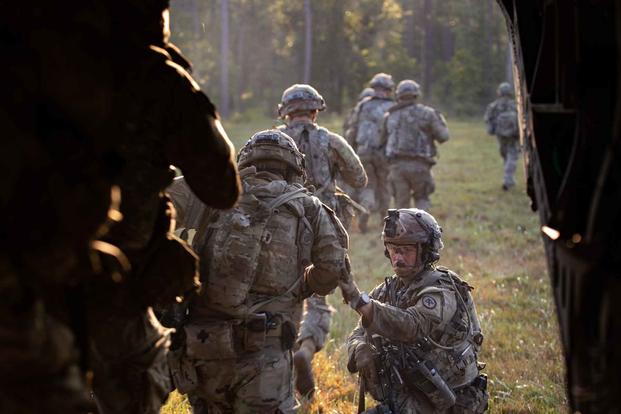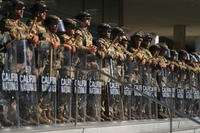It was a celebratory moment for the Army in April when it hit its retention goal for the fourth year in a row. The achievement signaled that, despite a historic recruiting slump, once soldiers are in, they like the service and tend to stay.
"I do love our soldiers. They joined a great team, and I can say for the last four years, every time they've joined the team, they stayed on the team," Sergeant Major of the Army Michael Grinston, the service's top enlisted leader, said at a recent ceremony.
But the reality is the opposite in the Army National Guard, which is optimistic about hitting its recruiting goals this year but is struggling to retain talent.
Read Next: Coast Guard Temporarily Relieves Commanding Officer of Sector North Carolina
The active-duty part of the Army retained 55,000 soldiers who were otherwise scheduled to leave the service. The Army National Guard seeks to retain 37,000 soldiers and has hit only about 63% of that goal, according to data provided to Military.com. Last year, the Army Guard was short 14% of its retention goal.
The fiscal year doesn't end until October. In some cases, troops on the fence about continuing their service might hold out for new reenlistment incentives.
But Guard soldiers may have different factors to weigh than their active-duty counterparts, such as how they juggle their part-time service with their full-time civilian careers. The demands in recent years have gotten increasingly higher, which could contribute to the Guard's difficulty in keeping soldiers.
The relationship between Guardsmen and civilian employers can sometimes get rocky, adding pressure to the choice to continue serving. While on paper, standard Guard service is isolated to weekends, drill schedules often include Thursdays and Fridays. Part-time troops also have to attend annual summer training events, which span two to four weeks, sometimes in addition to attending schools critical for promotion.
"Just being in the Guard, you start to get burned out because every month you can be assured you're working 12 straight days," said Eric Evans, CEO of Friendly Forces, an advocacy group for Guardsmen and reservists. "You go to work, drill and then straight back to work."
The National Guard made up a significant chunk of the combat force in the post-9/11 wars, was center stage in the government's response to the COVID-19 pandemic, and had a historic mission responding to the Jan. 6, 2021, insurrection at the U.S. Capitol.
The workload for the Guard shows no signs of slowing.
Domestic demands are seemingly constant, with units responding to wildfires and hurricanes, missions that are expected to become even more frequent as the impacts of climate change get more severe.
Those missions are on top of overseas commitments. Guard units from Ohio are a big part of the U.S. forces in Syria, Iraq and Africa, and have a significant presence in Europe.
But bringing in new Guard soldiers has been less of a heavy lift.
The Army National Guard has a shot of making its recruiting goals this year, having already reached nearly 95% of its goal to bring in close to 26,000 new soldiers this fiscal year, which started in October. On average, the Guard seeks to recruit roughly 3,000 soldiers each month. In total, it has recruited 3,048 more soldiers so far this fiscal year than it did compared to this time last year.
"The Army National Guard is on the path to meet our end strength by the end of the year," Gen. Daniel Hokanson, the National Guard's top officer, told lawmakers at a hearing in June. "I am not declaring victory; I am saying that, right now, all of the trends are very positive."
The very fact that the service component is smaller than its active-duty counterpart and has less than half of the recruiting goal could be why it's hitting its recruiting goals so early in the fiscal year -- especially ahead of the summer, which is broadly considered prime recruiting season.
The Marine Corps and Space Force are also expected to meet their respective recruiting targets, though those branches are significantly smaller than the other services.
The active-duty side of the Army is expected to come up short of its goal of recruiting 65,000 new soldiers. Last year, it came up 15,000 short of its goal of bringing 60,000 new troops into the ranks.
-- Steve Beynon can be reached at Steve.Beynon@military.com. Follow him on Twitter @StevenBeynon.
Related: 2023 Ain't 2022: More Americans Signing Up with Army Guard, Internal Docs Show













